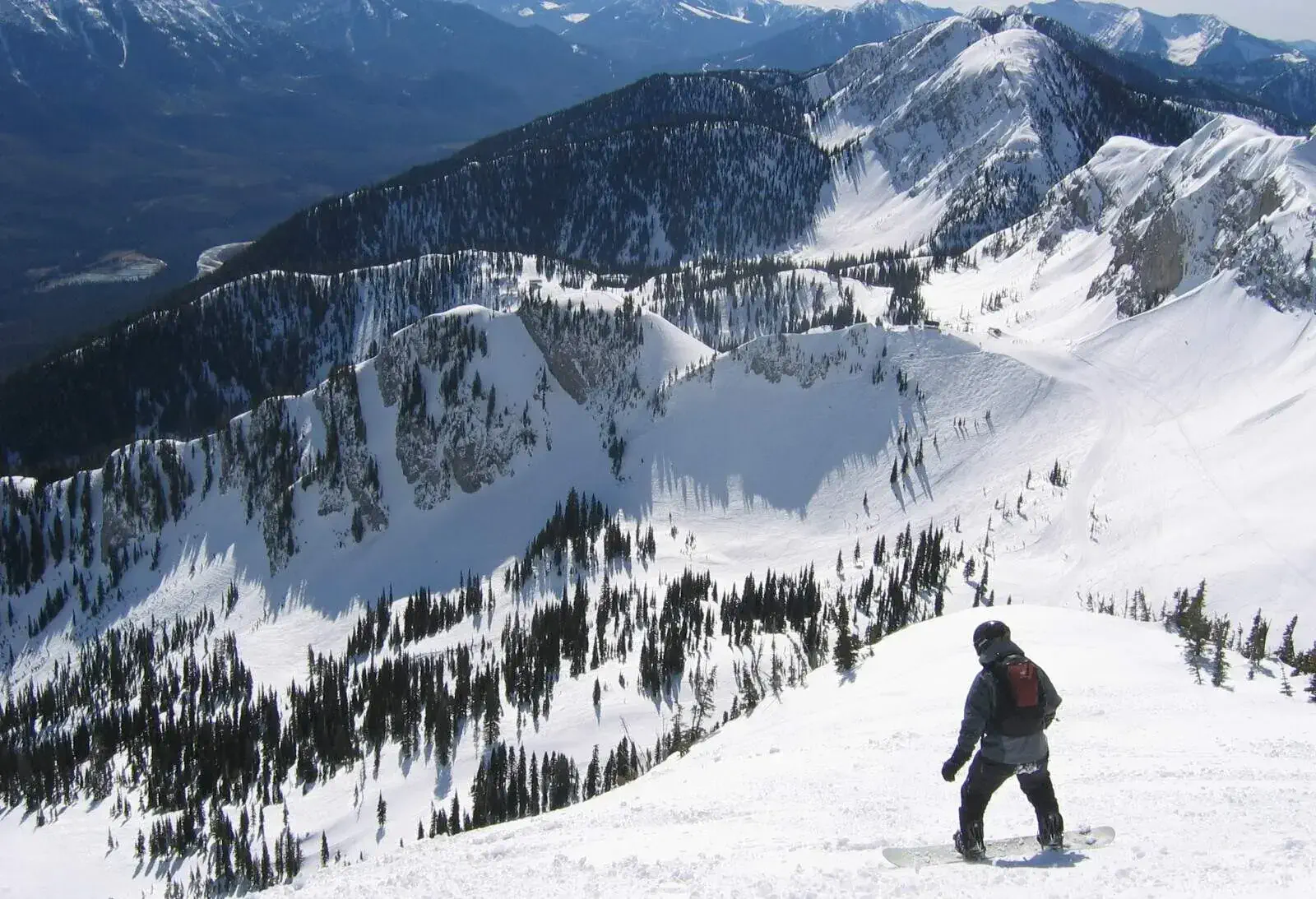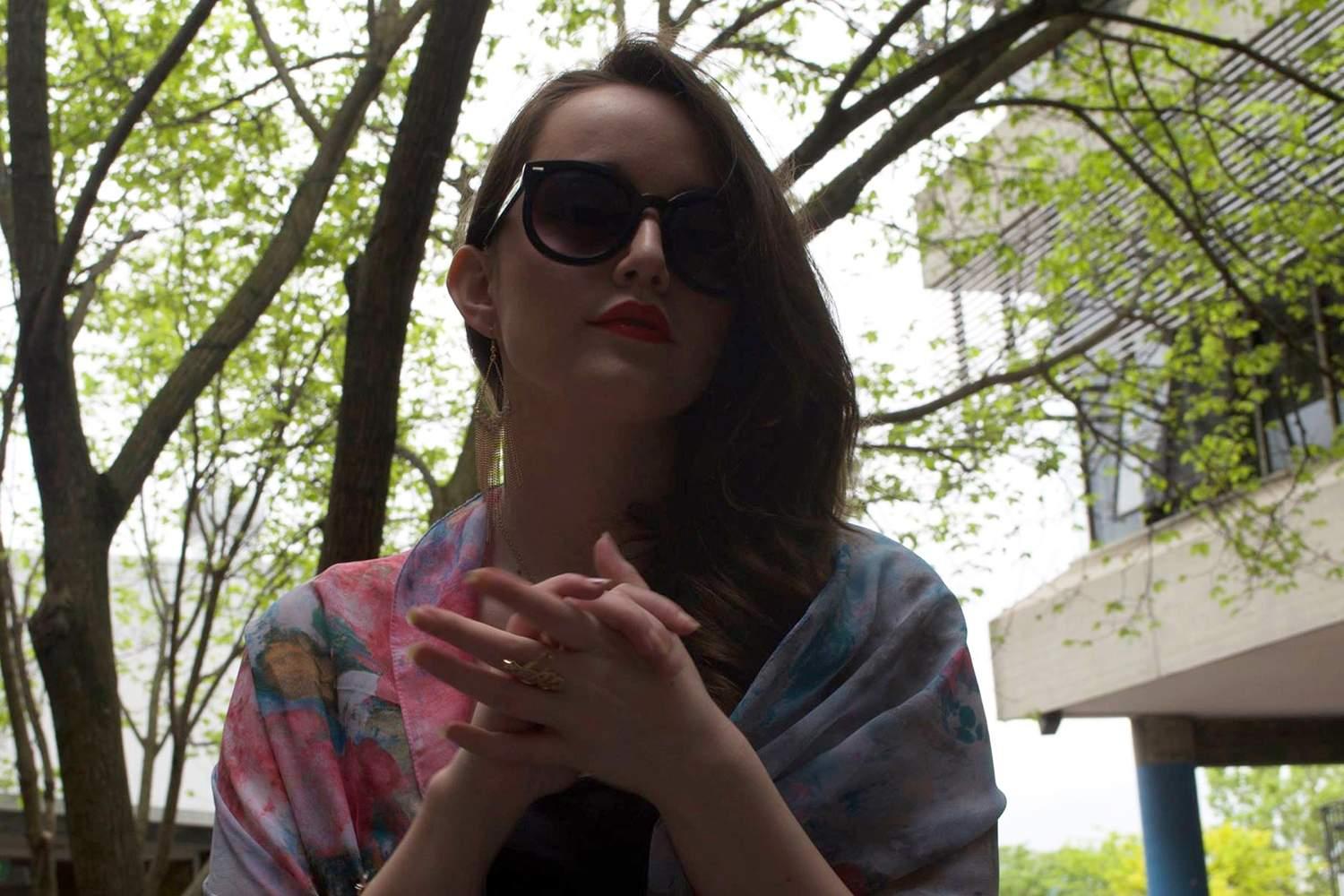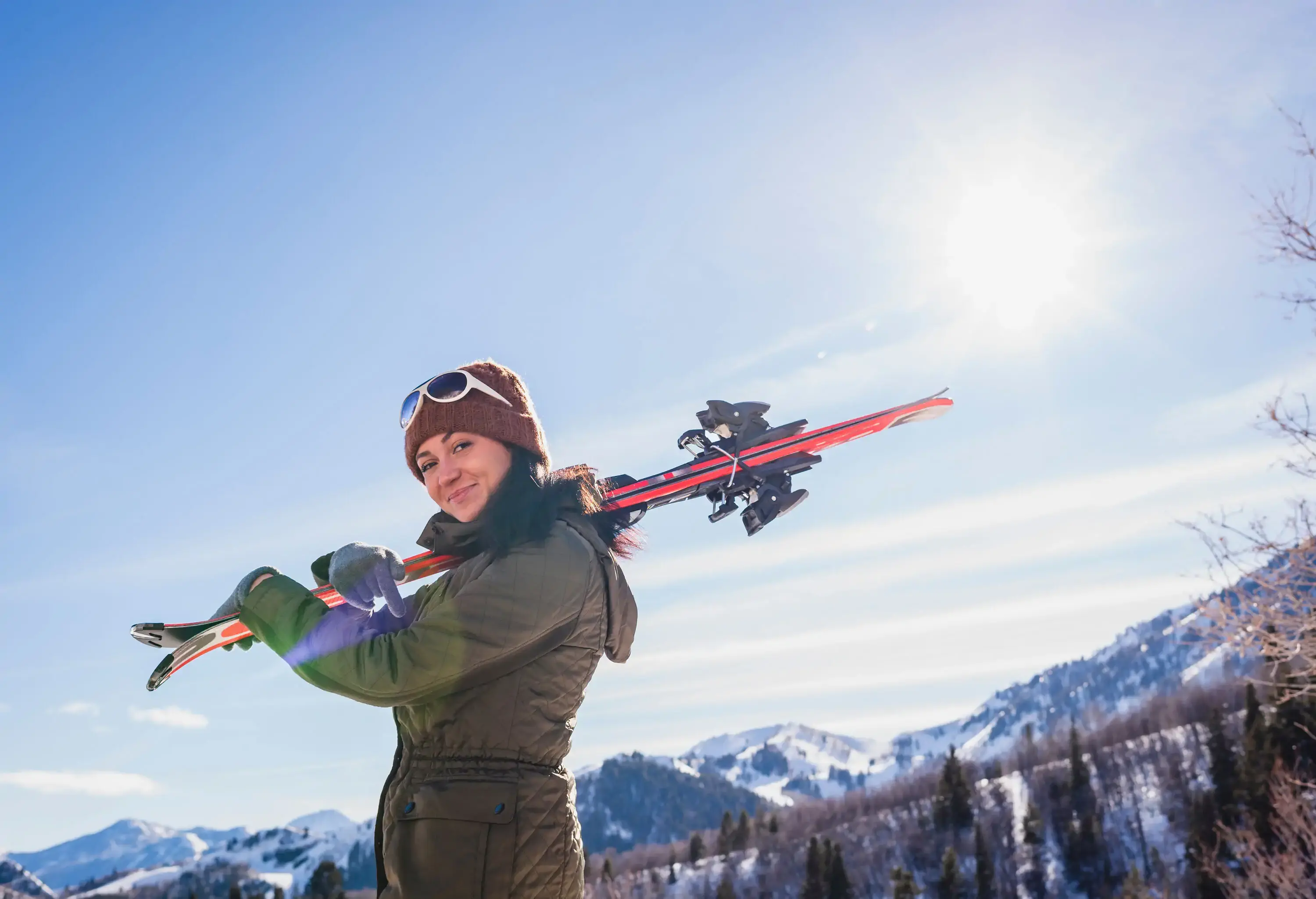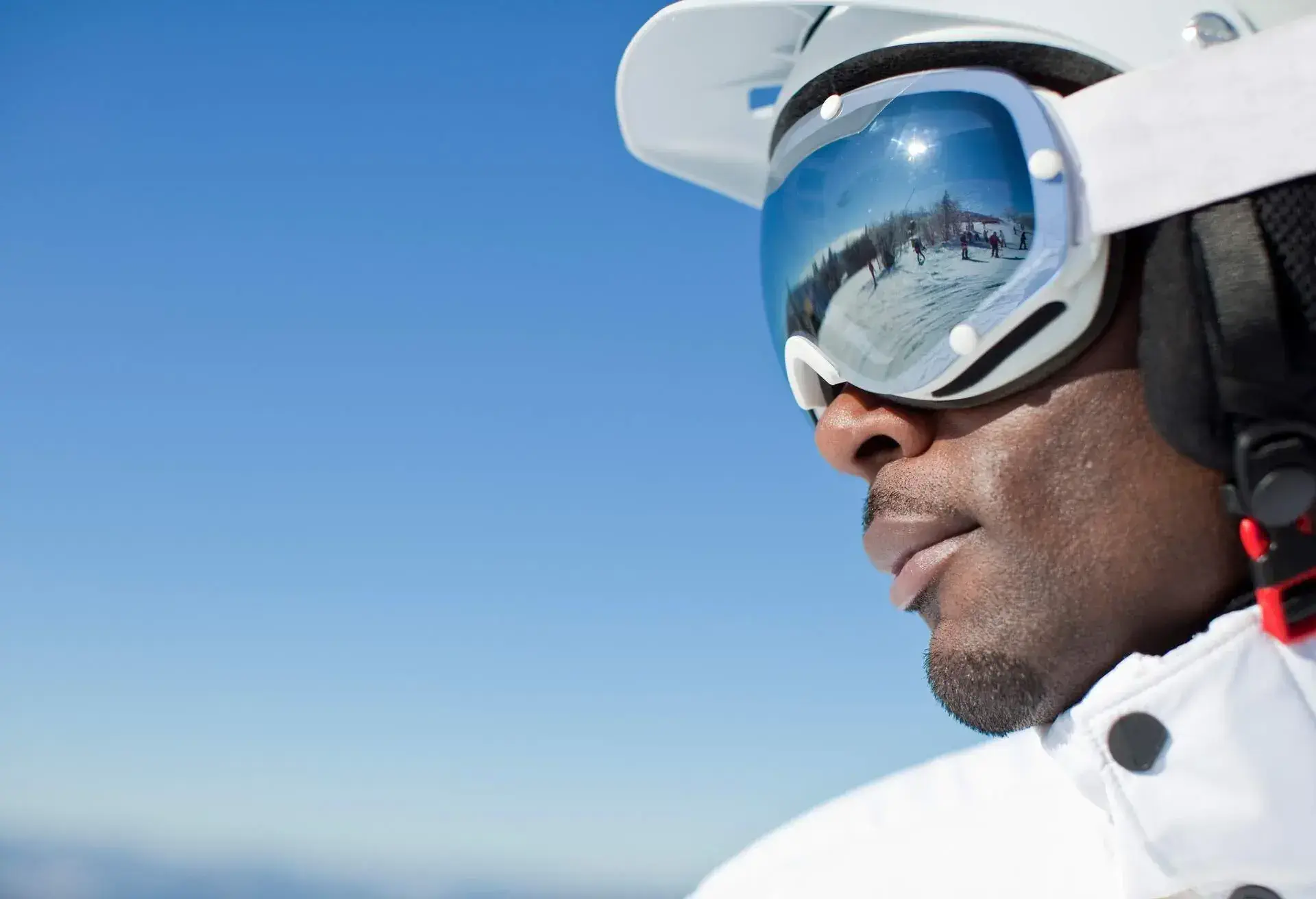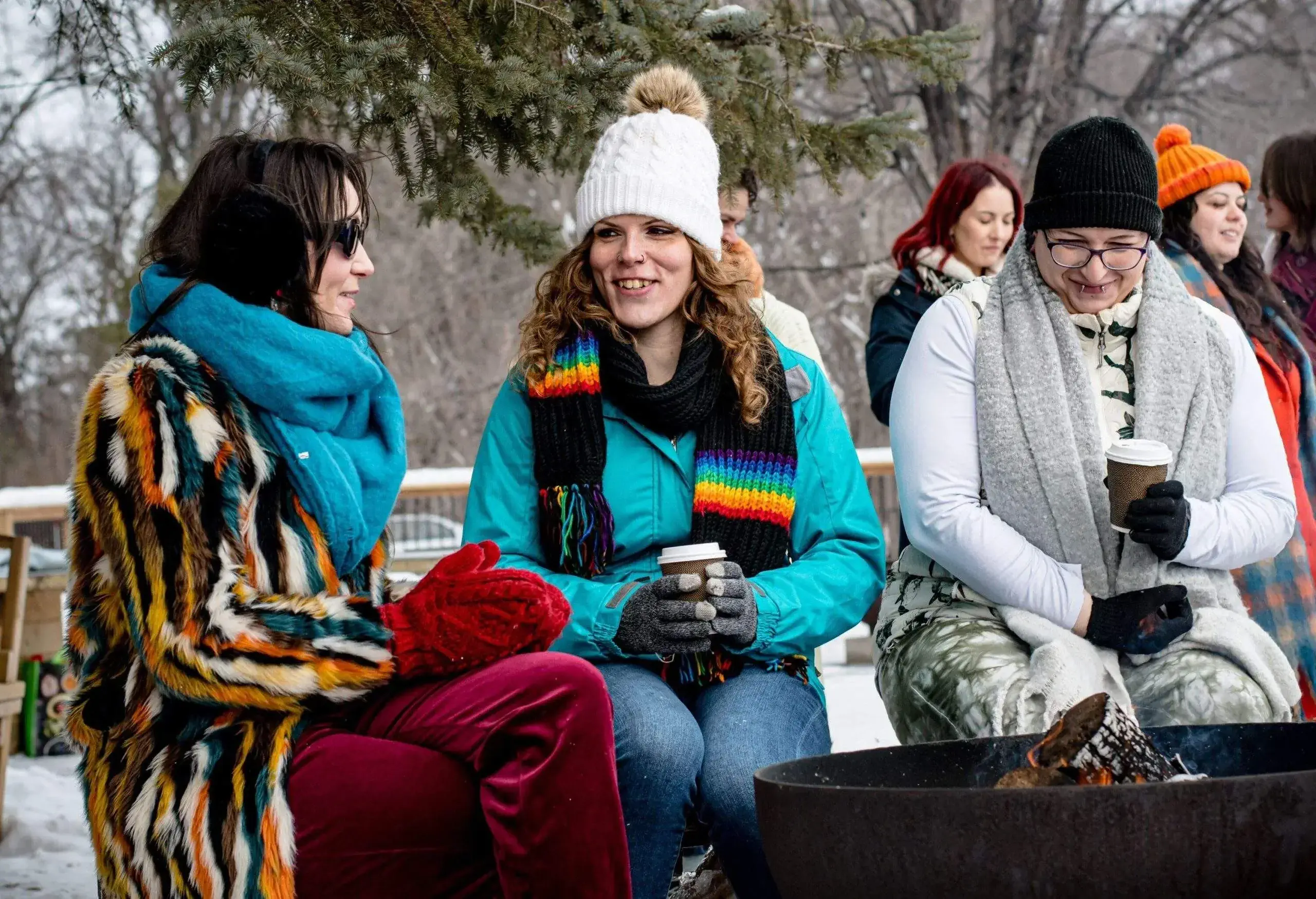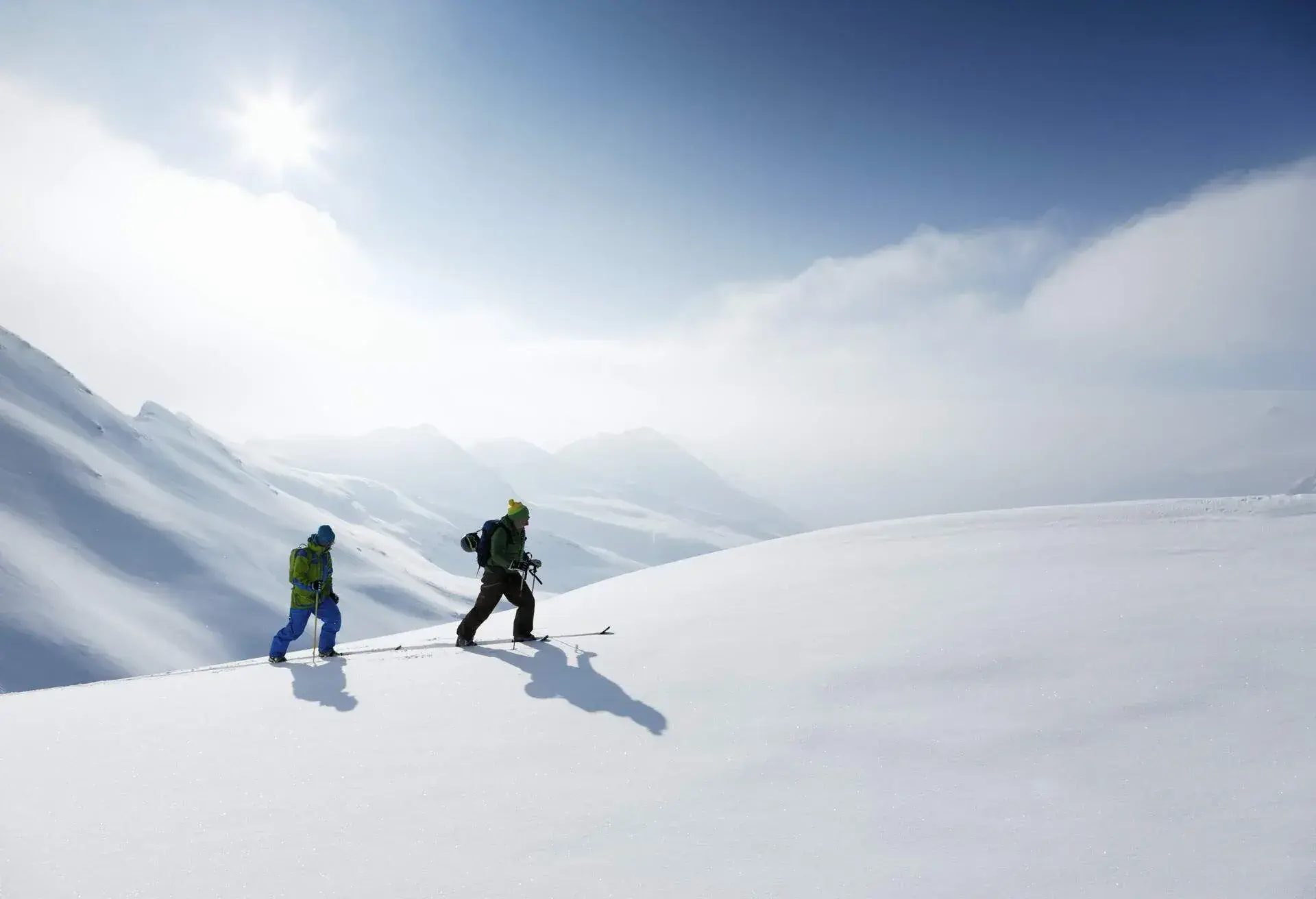A holiday at one of the best ski resorts in Canada can be the perfect way to spend your winter break this year. Canada’s mountains and climate provide excellent skiing and snowboarding conditions throughout winter (and into spring). Aside from Whistler Blackcomb in British Columbia and Banff in Alberta, Canadian ski resorts tend to be less crowded than those in the United States. There are fantastic ski resorts all throughout the country to suit different budgets and skill levels, so you can find the perfect Canada ski package for you.
Ski resorts in Canada: Snow season
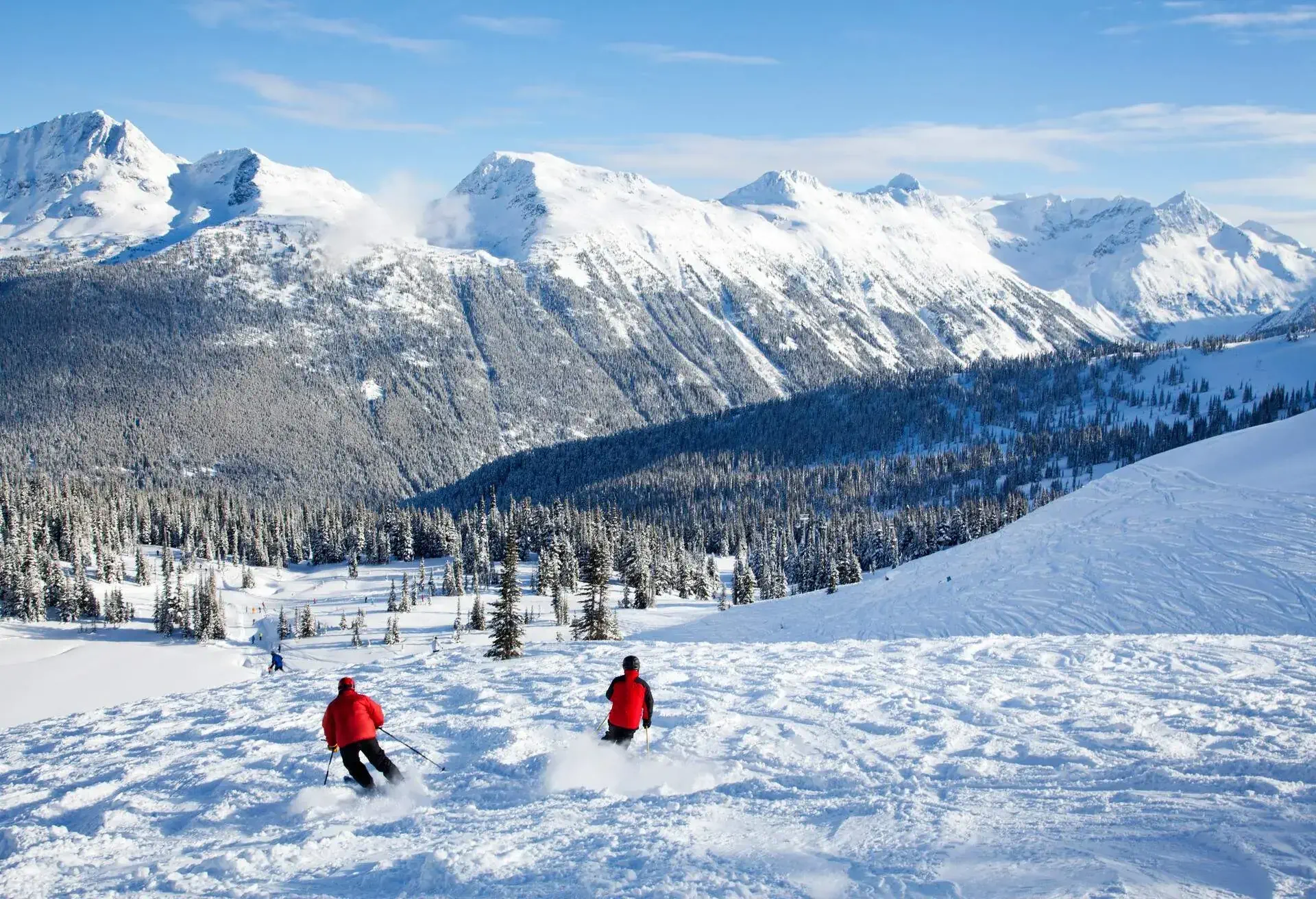
Canada has one of the longest snow seasons in the world, with many resorts opening in late November and staying open until mid-April. The exact length will vary depending on the location and the weather conditions (some of Canada’s resorts stay open until late May). The long ski season in Canada means that travellers can experience excellent skiing holidays in Canada, even during spring.
The highest mountain in Canada
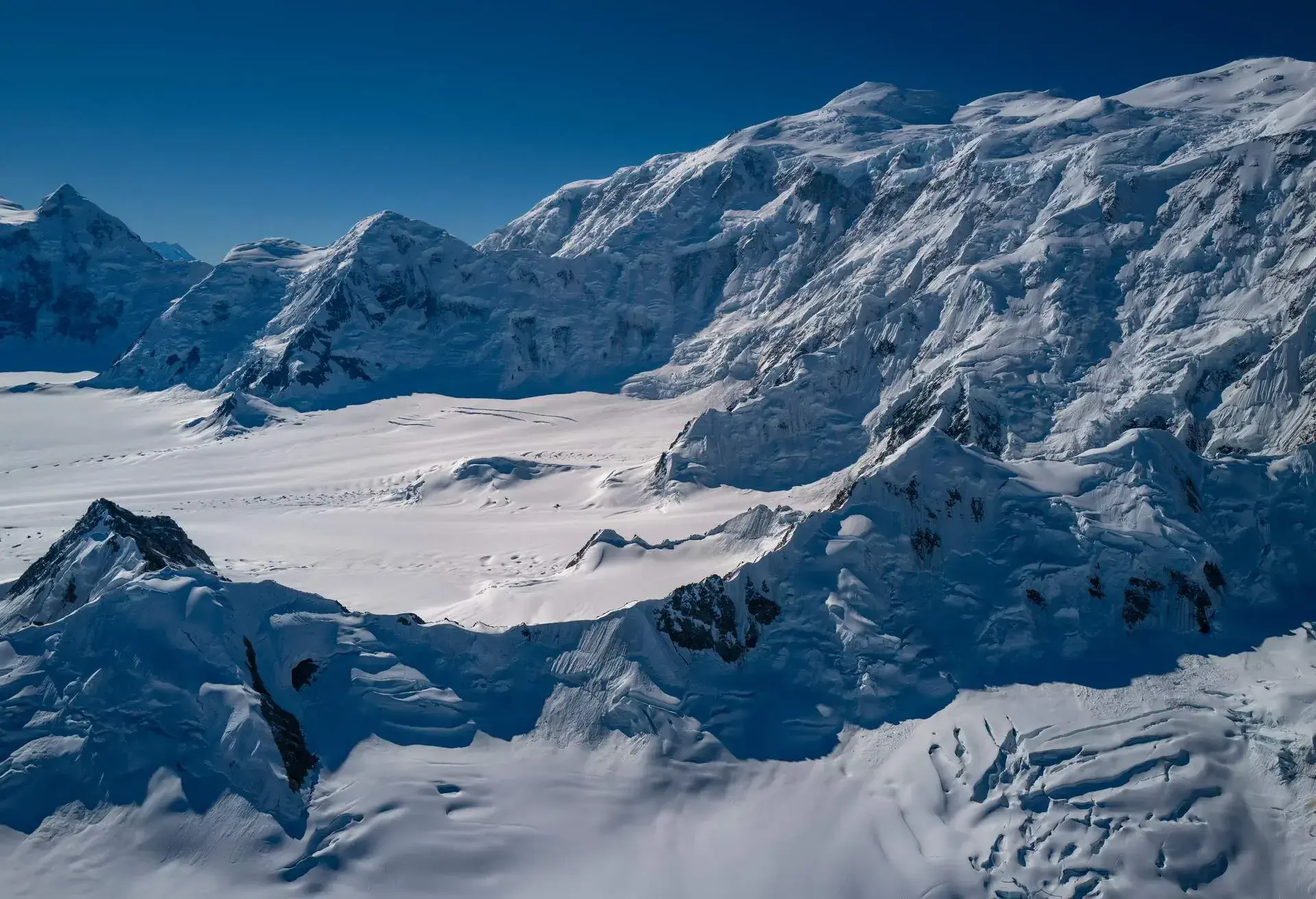
Mount Logan is the highest mountain in Canada, and skiing here is not for the faint-hearted. Ski mountaineers can take the Kings Trench route on a multi-day trip up the mountain and back down again. You won’t find cosy ski resorts and villages here; instead, you’ll need some winter camping gear and, preferably, some experience camping in extreme temperatures. It’s not the classic ski resort getaway but it’s certainly an experience you’ll never forget.
Ski resorts in Canada: Whistler Blackcomb
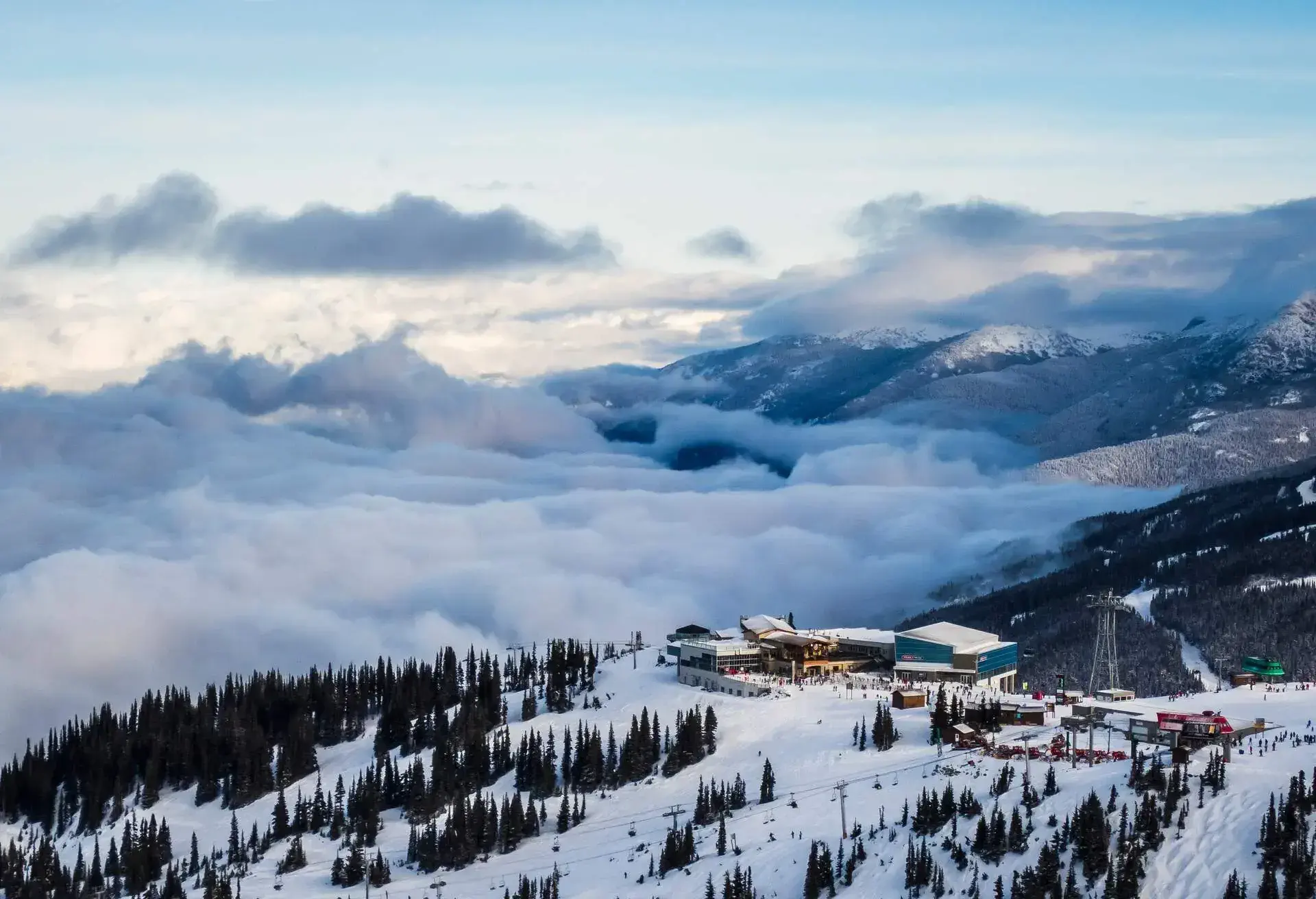
Whistler Blackcomb is Canada’s most well-known ski resort, mostly due to the fact that it is the largest ski resort in North America. Set across the interconnected mountains of Whistler and Blackcomb, it is widely considered one of the best ski resorts in the world. It offers visitors the chance to ski and snowboard across varied terrain.
This resort is perfect for anyone travelling in a group with varying skill levels, as you’ll find everything from gentle bunny slopes to steep drops. Whistler Blackcomb is also home to a massive ski village, where you’ll find a range of shops, restaurants, and even a few museums.
Quick facts: Whistler Blackcomb
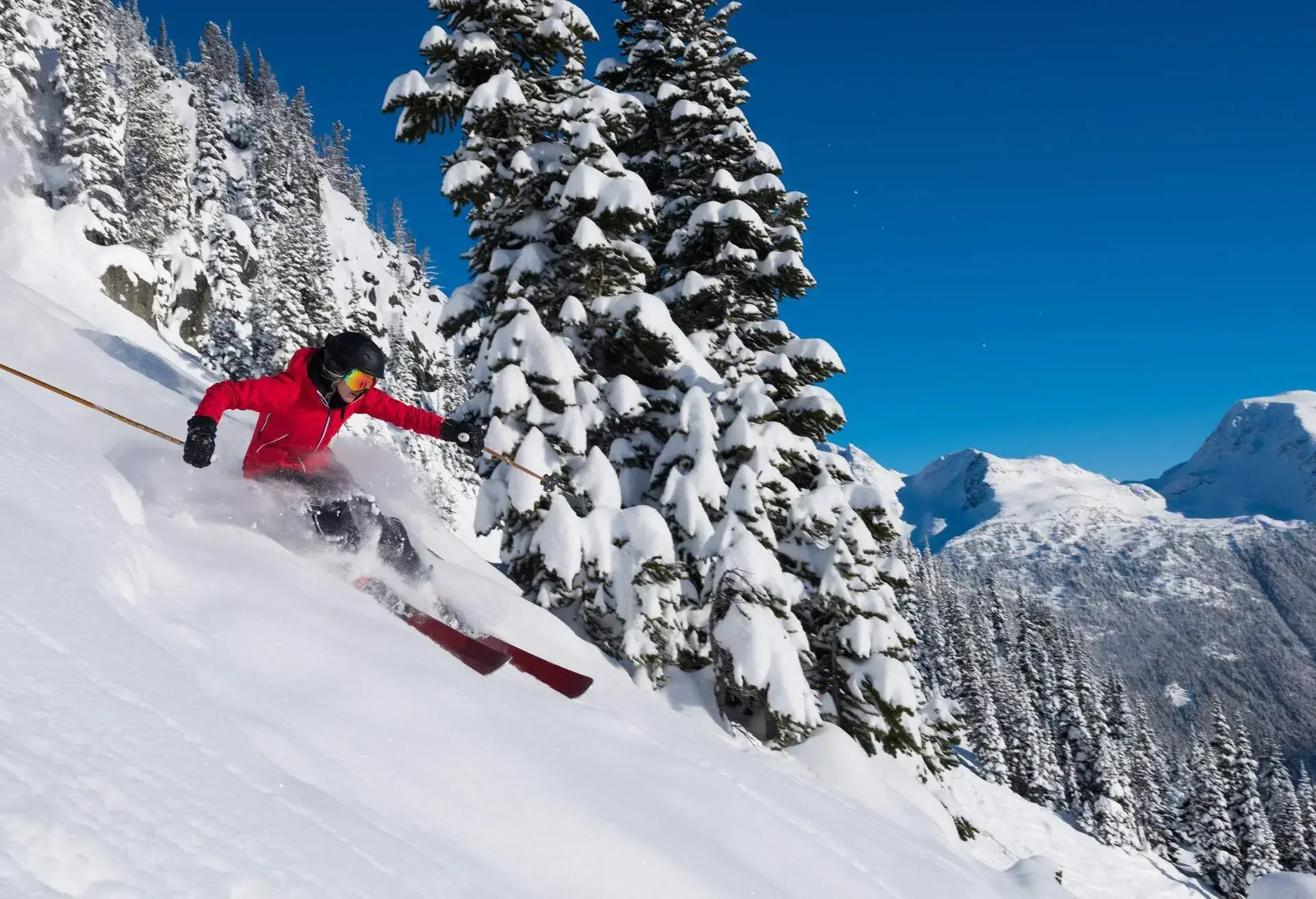
Whistler Blackcomb’s highest point sits at around 2,436 metres, and its steepest vertical drop is roughly 1,609 metres. It receives an average annual snowfall of around 10.8 metres and temperatures get as low as -15°C during winter, with average daily temperatures of around -5°C. It gets reliable snowfall throughout the season and is usually open between late November and late April. Either Whistler or Blackcomb mountain will usually stay open for an extra month, until late May.
Sun Peaks
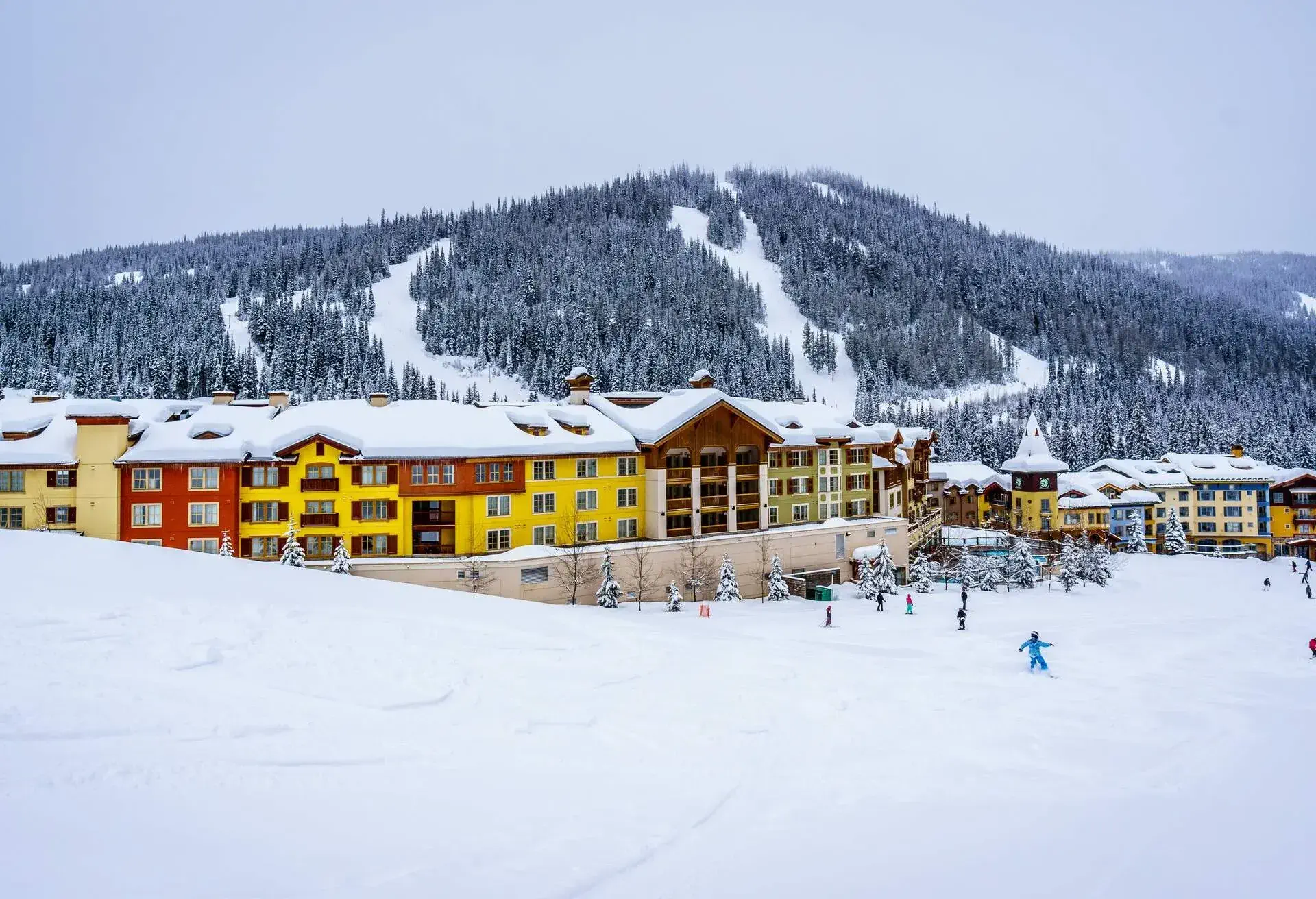
Sun Peaks is Canada’s second-largest ski resort, located in British Columbia, just under an hour from Kamloops. This ski resort is very family-friendly, offering ski schools, childcare facilities, and many other fun activities for kids. Expert skiers won’t find much to challenge them here, but beginners and intermediate skiers will find plenty of slopes to suit their skill level. Most accommodation at the resort is ski-in, and ski-out, so you can easily access the slopes, plus there are plenty of cafes and restaurants in the village.
Quick facts: Sun Peaks
Sun Peaks gets an average of 6 metres of snow each season and average temperatures of around -6°C. It sits at an elevation of around 2,080 metres with a vertical of about 882 metres. There are over 4,000 acres of skiable terrain.
Lake Louise
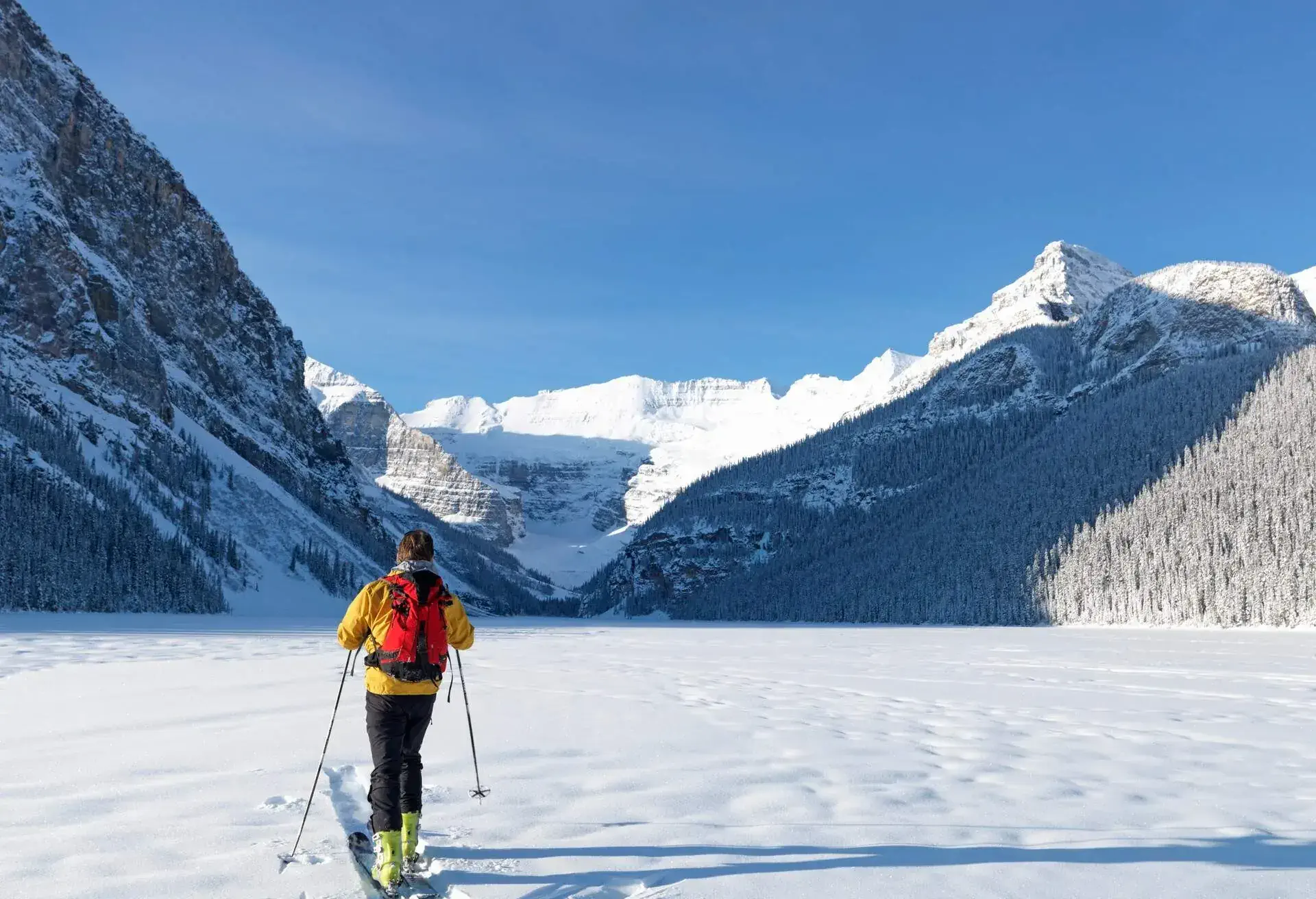
The resort town of Banff is close to some of the best skiing in Canada and Lake Louise is no exception. It’s located within 2 hours of Calgary, which means it can get fairly crowded, particularly over weekends. Lake Louise is well known for its stunning views, so make sure to pack your camera along with your ski gear. Those looking to try some snowboarding in Canada will love Lake Louise, with its modern ski lifts and well-groomed slopes. This resort is also a perfect option for those hoping to take a ski holiday at the extreme ends of the ski season. It usually opens in early November and closes in early May, giving a longer season than many other ski resorts.
Quick facts: Lake Louise
Lake Louise spans roughly 1,700 hectares and gets an average annual snowfall of 3.6 metres. The low average temperatures of around -6°C keep the snow dry. Its top elevation is about 2,637 metres and its longest run is about 8 kilometres.
Sunshine Village
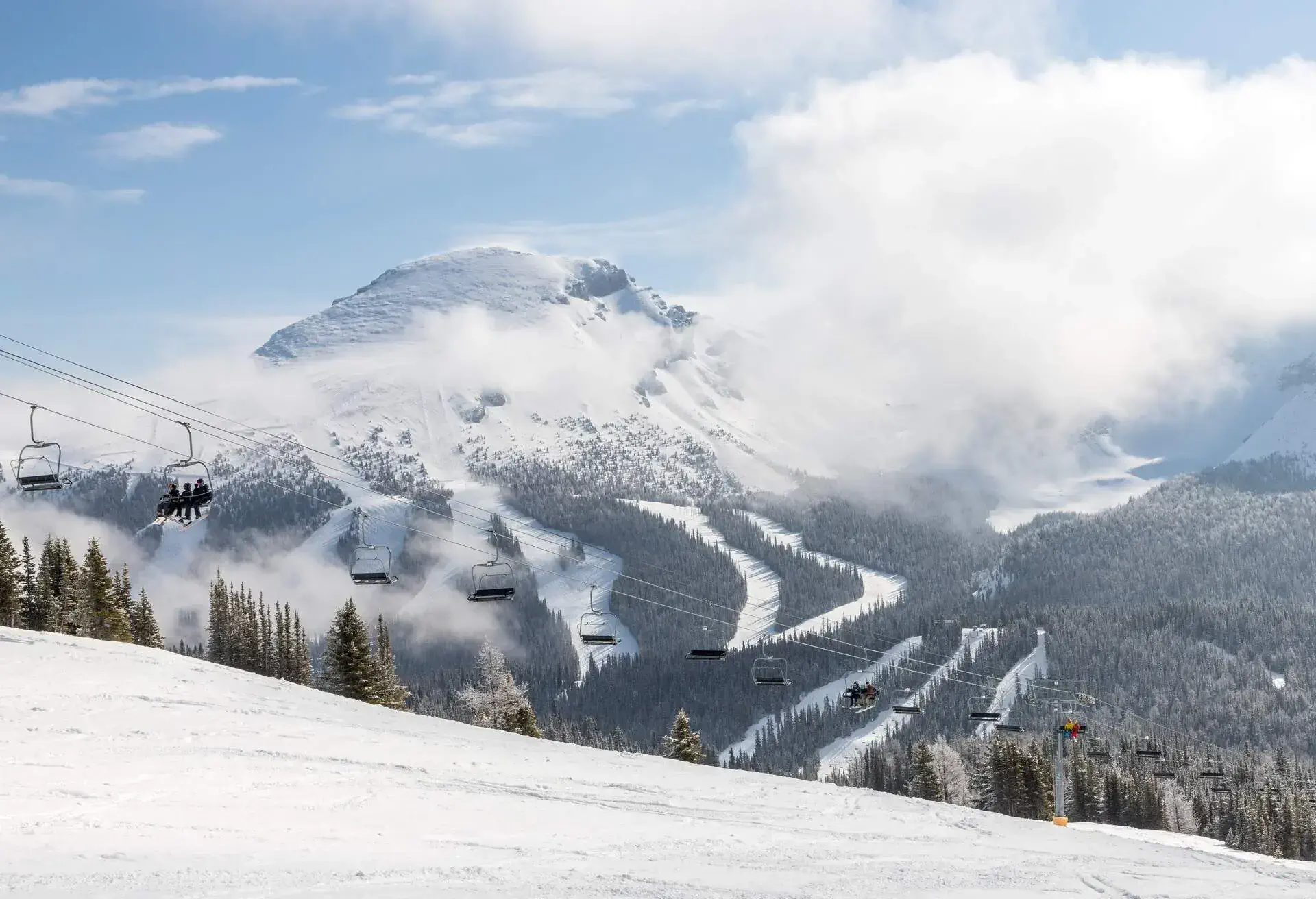
Sunshine Village in Banff has a wide range of slopes for beginners and experts, skiers, and snowboarders. Like the nearby Lake Louise, it promises gorgeous views and large crowds. Sunshine offers everything from gentle runs for beginners to super steep slopes for experts, like Goats Eye Mountain. If you love a bit of adventure, you can try out the most extreme runs like Delirium Dive, where hazards are unmarked and small avalanches are a real possibility. You’ll need appropriate avalanche gear before you can try it out, and even then, the area is sometimes closed off when the conditions are too risky.
Quick facts: Sunshine Village
Sunshine Village’s high elevation (around 2,159 metres) helps it get excellent snow coverage, but it also means it tends to get extremely cold and visibility can get quite low. The average temperature is -6°C, though it can feel even colder in exposed areas. It gets an average yearly snowfall of approximately 9 metres.
Mount Norquay
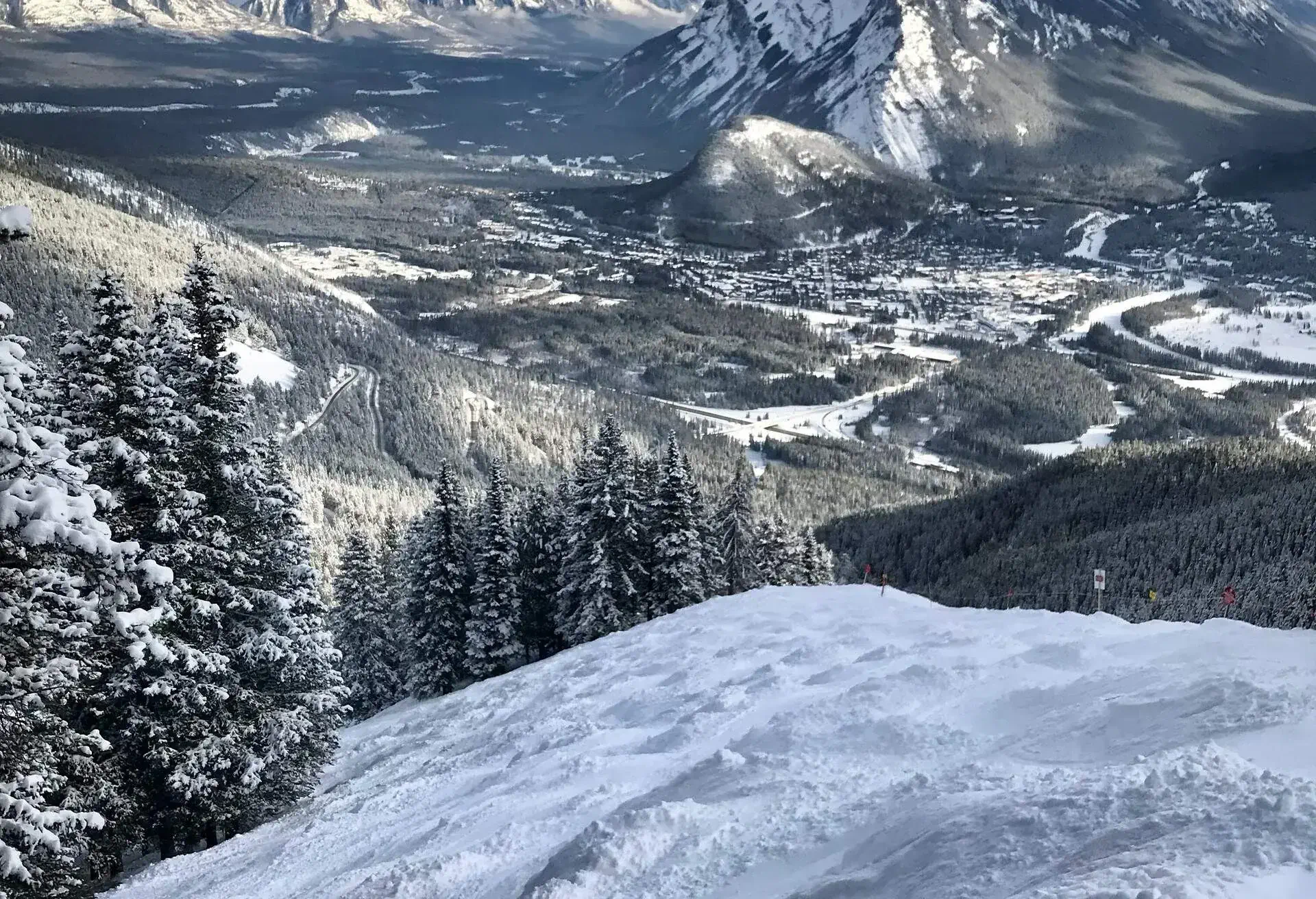
Mount Norquay is a small ski resort close to Banff that tends to be overshadowed by the likes of Lake Louise and Sunshine Village. This makes it perfect for anyone who can feel overwhelmed by the size of other resorts and is looking to get away from the big crowds.
Families might appreciate the child care and ski school on offer. Mount Norquay doesn’t have any on-mountain accommodation available, but it’s around 25min from Banff and there’s a daily shuttle bus during the peak season. You could also consider visiting Mount Norquay on a day trip from another ski resort like Lake Louise.
Quick facts: Mount Norquay
Mount Norquay gets around 3 metres of snow on average per season, less than many other resorts, but they use snowmaking to make up the difference. It spans around 190 acres and has an elevation of roughly 2,133 metres. The average temperature in winter is about -6°C.
Revelstoke
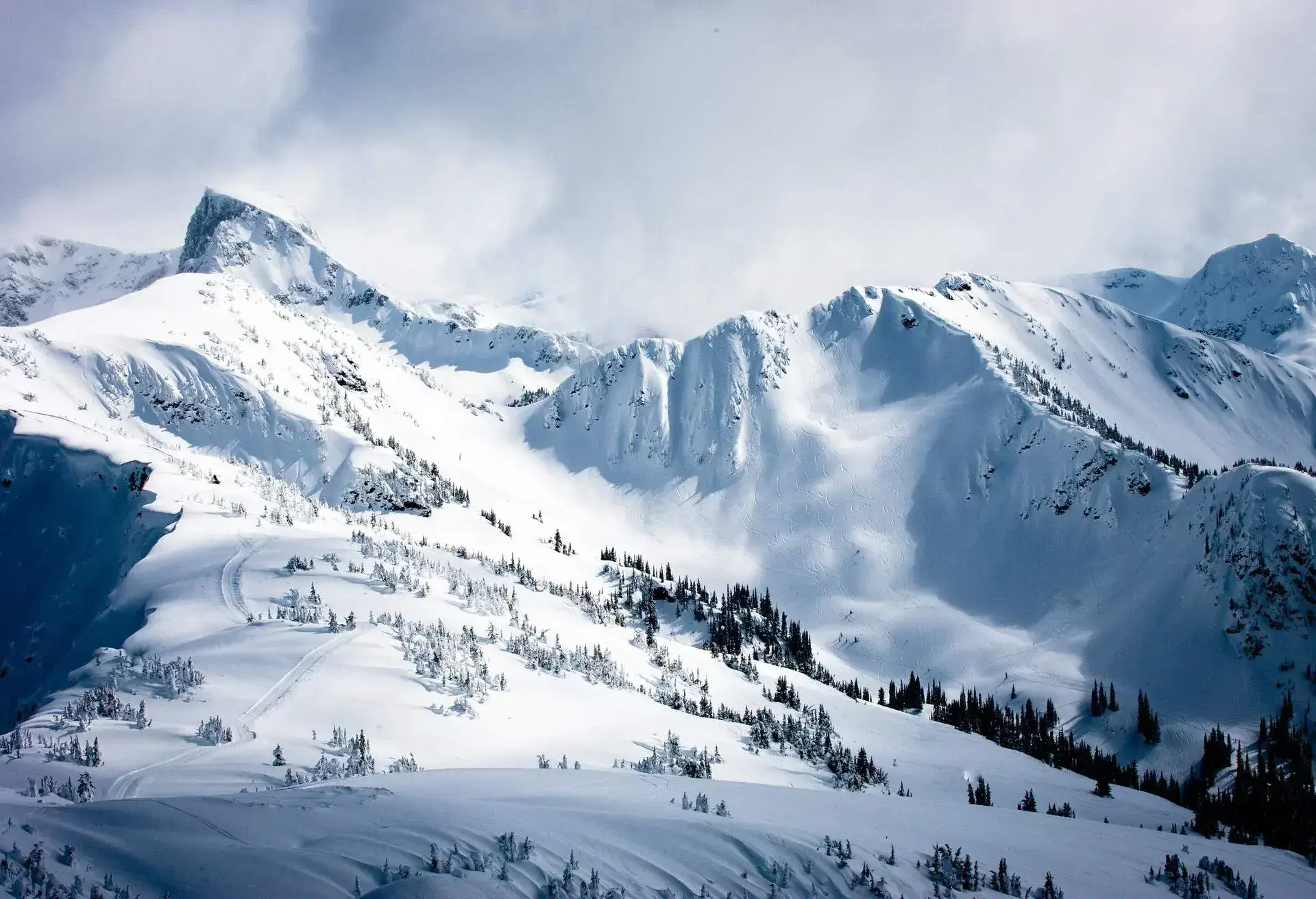
First opened in 2007, Revelstoke has been continuously developing into one of Canada’s premier ski destinations. However, it’s still a lesser-known resort, so it’s perfect for skiers who prefer to avoid big crowds.
Revelstoke is a great option for more adventurous skiers, offering cat skiing and heliskiing. This lets you pick how you want to ski depending on your budget and the weather conditions and try out some more difficult terrain. Revelstoke is generally better for more experienced skiers, with long verticals and backcountry terrain. However, it does have some great runs for beginner and intermediate skiers too.
Quick facts: Revelstoke
Revelstoke gets lots of snow each season. The main resort gets an average of 10.5 metres and the heliskiing areas get up to 18 metres of average snowfall each season. Temperatures average around -1°C. Its highest point of elevation is about 2,200 metres and its roughly 1,710-metre vertical drop is the longest in North America.
Fernie Alpine
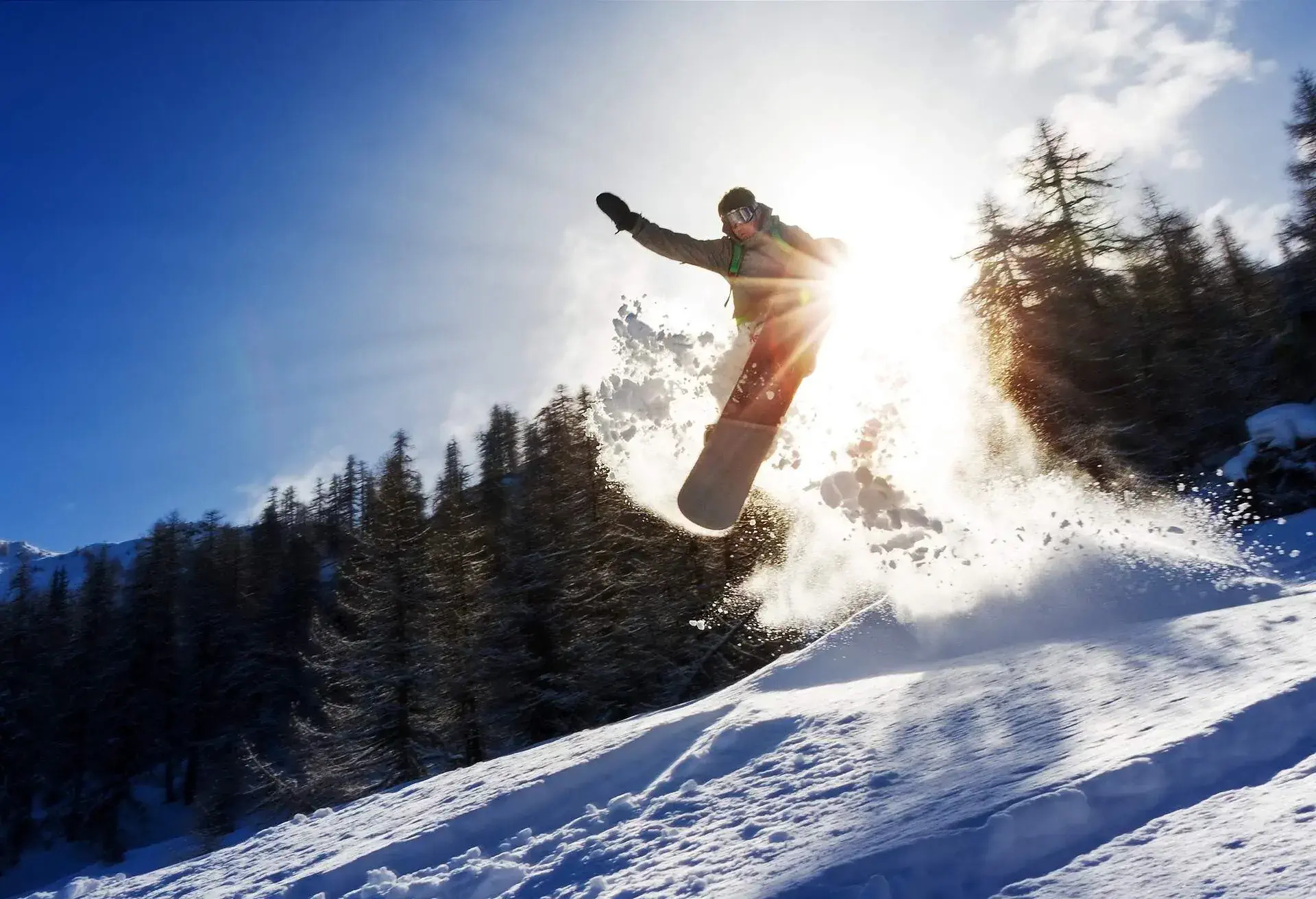
Fernie Alpine has just over 140 pistes across roughly 2,500 acres of skiable terrain. With plenty of expert-level terrains, Fernie Alpine is particularly popular with skiers and snowboarders looking to test their skills. Sidecountry, backcountry and sub-alpine slopes add to the variety, and cat skiing is also available. The main village offers plenty of accommodation options, including private condos and hotels. You’ll also find a few lovely apres ski bars and restaurants.
Quick facts: Fernie Alpine
Fernie Alpine has about 2,504 acres of skiable terrain and a roughly 1,082-metre vertical. It gets around 7 metres of snow each season on average. Winter temperatures average around -1°C, and it gets roughly 9 metres of snow annually.
Mont Tremblant
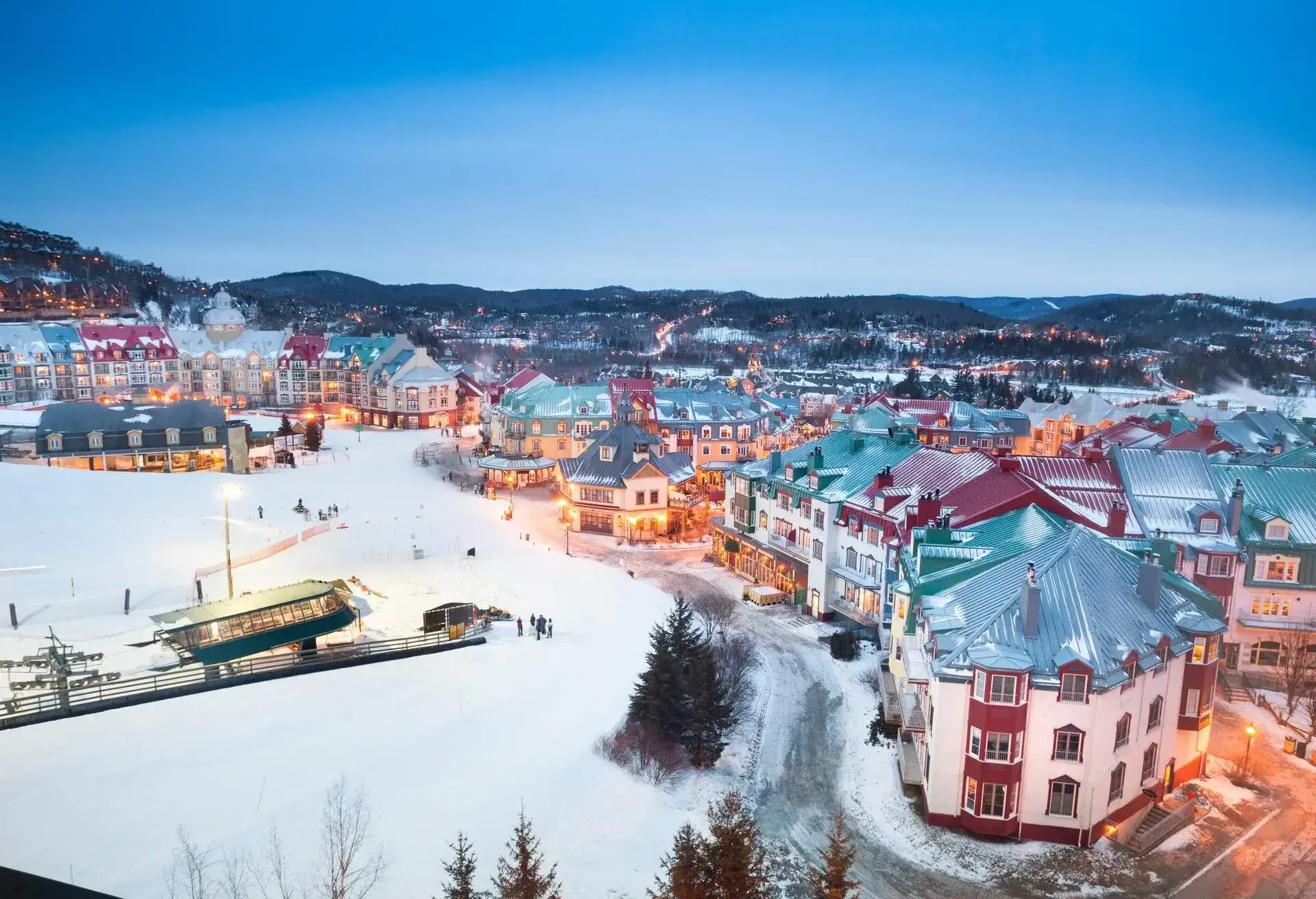
Mont Tremblant Ski Resort is open year-round, offering swimming and golf during the summer months and excellent skiing conditions during winter. Although it is smaller than many resorts on this list, at around 630 acres, it still has a variety of slopes for all skill levels.
Mont Tremblant is one of the best places to ski in Canada on the east coast, which makes it particularly popular with skiers visiting from the UK, due to the shorter flight time. Tremblant is well known for its nightlife, with plenty of excellent restaurants and bars, particularly around the Vieux Tremblant. Plus, with a cinema and casino in the resort, you can find plenty to do away from the slopes.
Quick facts: Mont Tremblant
Mont Tremblant Ski Resort has a base elevation of around 230 metres and a top elevation of about 875 metres. It gets an average annual snowfall of 3.5 metres, and the temperature in winter is usually around -4°C.
Grouse Mountain
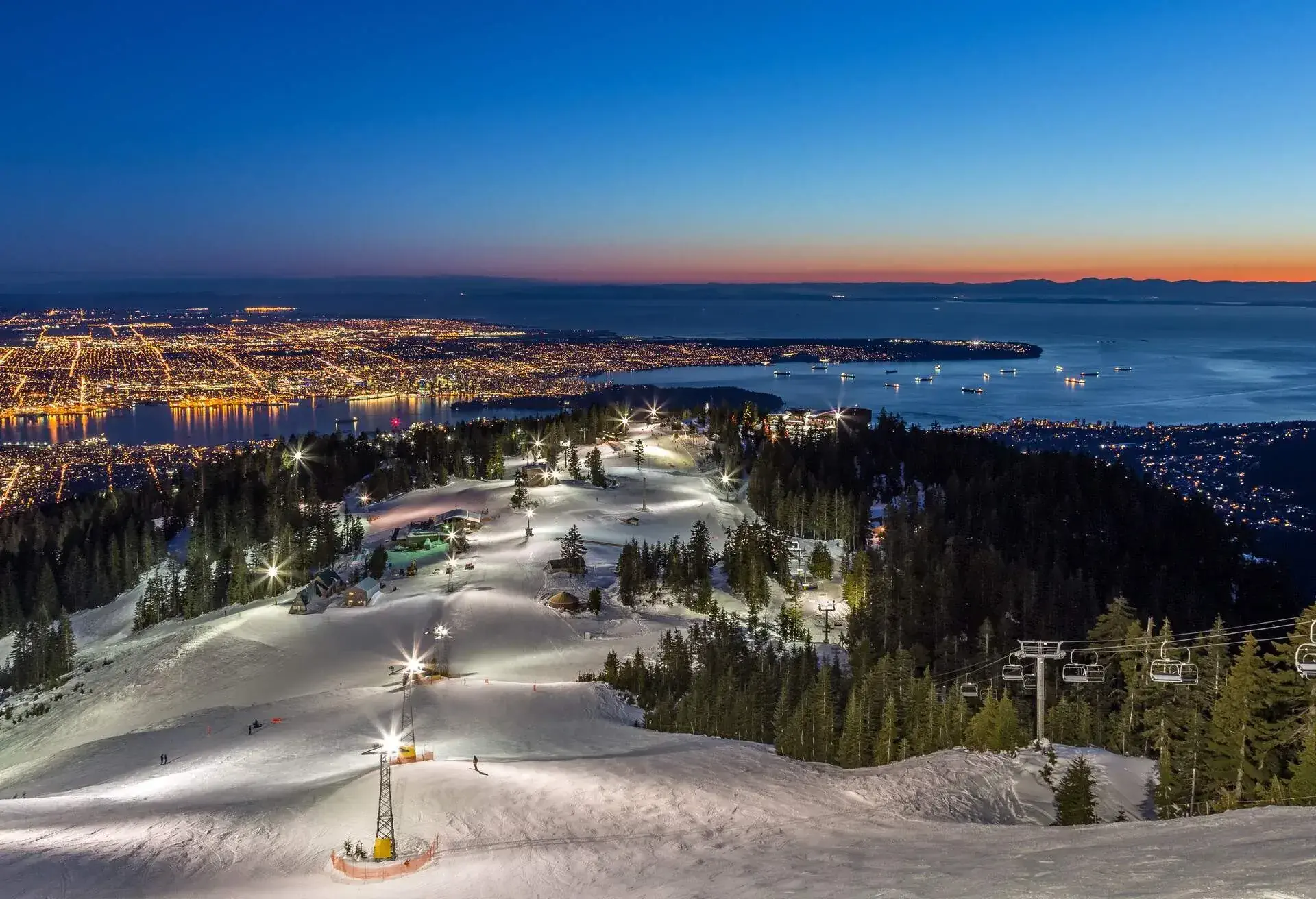
Grouse Mountain Ski Resort makes a great day trip for anyone visiting Vancouver during the winter months. From the mountain, you’ll have stunning views of the city below, particularly at night time. It has a good range of slopes, with around 20% geared towards beginners, 40% for intermediate skiers and 40% for advanced skiers. Grouse Mountain is also home to more than 8 kilometres of snowshoe trails, and skaters can test their skills on the outdoor skating pond. With the city of Vancouver less than half an hour away by car or bus, Grouse Mountain is the ideal ski resort for travellers who don’t want to commit to a full ski holiday.
Quick facts: Grouse Mountain
Grouse Mountain has a peak elevation of about 2,357 metres and its longest vertical is roughly 162 metres. There are over 200 acres of skiable terrain across seven parks. The average temperature is around -1°C during winter, and most of Grouse Mountain’s snow is provided by snowmaking.
Big White
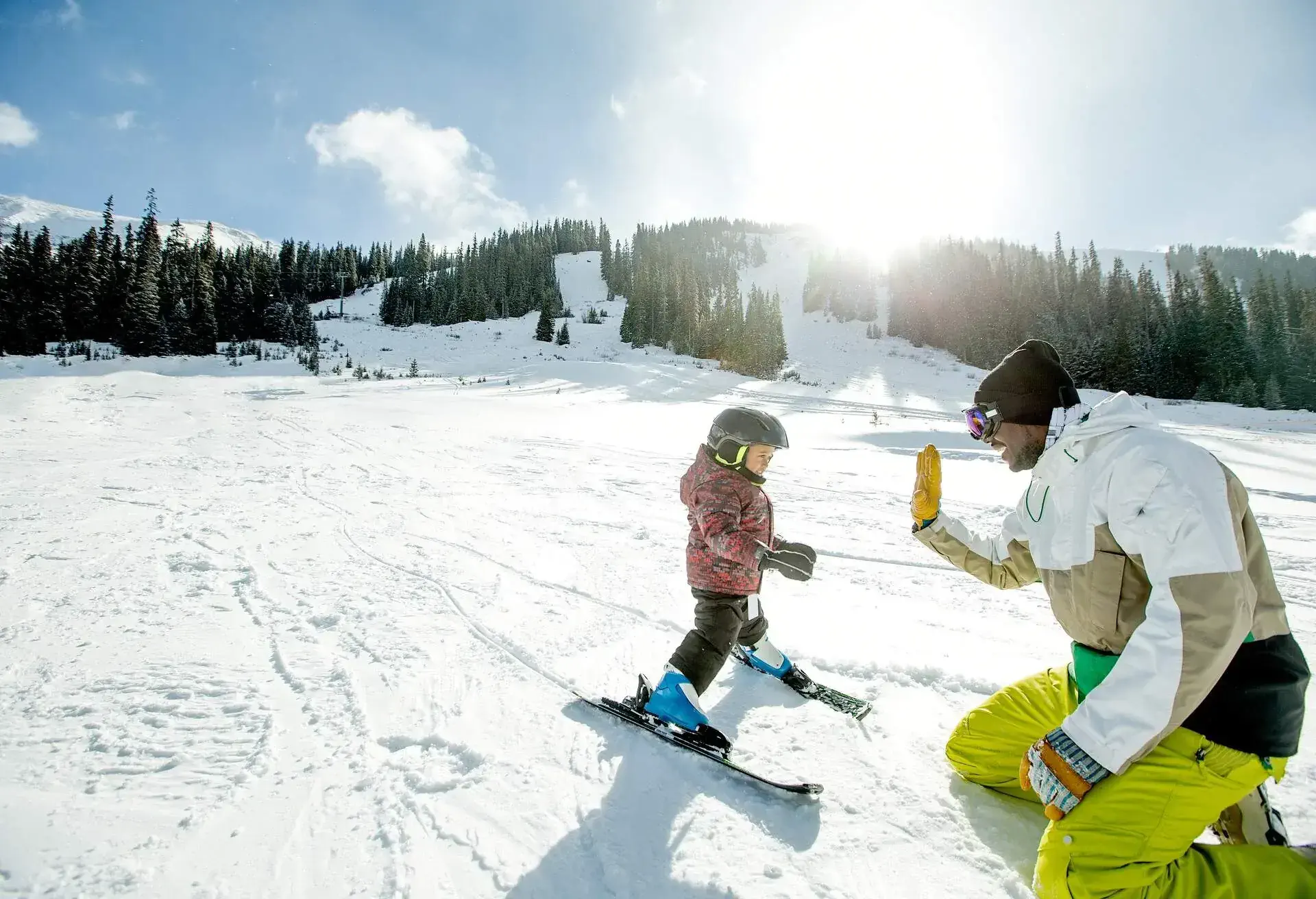
Big White is another ski resort that’s great for families with young kids, with an award-winning child care centre and a ski school. The resort also offers a range of extra activities like ice skating, mini snowmobiles, and frequent fireworks nights. A large part of Big White is consistently well-groomed, which makes it ideal for beginners and intermediate skiers (the majority of pistes are also intermediate). It also has some black diamond runs and some off-piste terrain, to keep more experienced skiers challenged. The resort has lots of ski-in, and ski-out accommodation options, with private apartments, full homes, and hotels available. The village has a few shops, restaurants and bars.
Quick facts: Big White
Big White gets around 7.5 metres of snow each year and the average temperature in winter is roughly -9°C. Its base elevation is about 1,508 metres and its top elevation is around 2,319 metres. It offers roughly 2,765 acres of skiable terrain. With great skiing and a range of other activities, Big White is one of the best ski resorts in Canada.
Red Mountain Resort
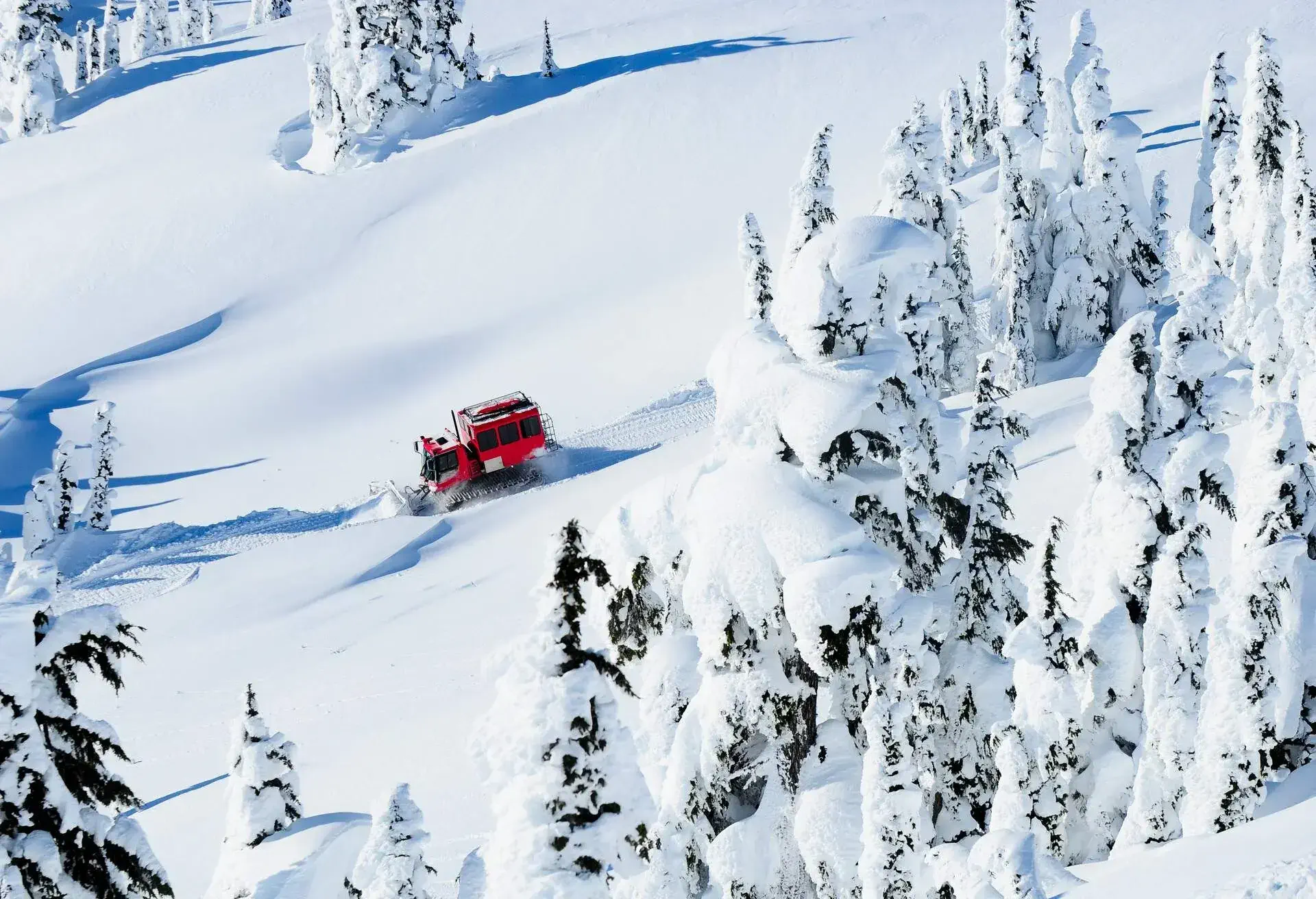
The Selkirk Powder Triangle is a region of British Columbia well known for excellent skiing conditions, and Red Mountain is one of the best ski resorts in the area. It remains under the radar, for now, so you’ll likely find it less crowded than other resorts; it’s also a great option for a cheap Canada ski holiday.
The resort also provides snowcat shuttles to more difficult terrain at Mount Kirkup. You’ll have two options for accommodation: on the mountain or in the nearby town of Rossland. Rossland has a great, laid-back atmosphere and offers a range of accommodations to suit different budgets while staying at Red Mountain can put you within minutes of the ski lifts.
Quick facts: Red Mountain Resort
Red Mountain gets average winter temperatures of about -4°C and sees an average of 7.5 metres of snow each season. Its base elevation sits at roughly 1,185 metres and its top elevation is about 2,075 metres.
Panorama Mountain Resort
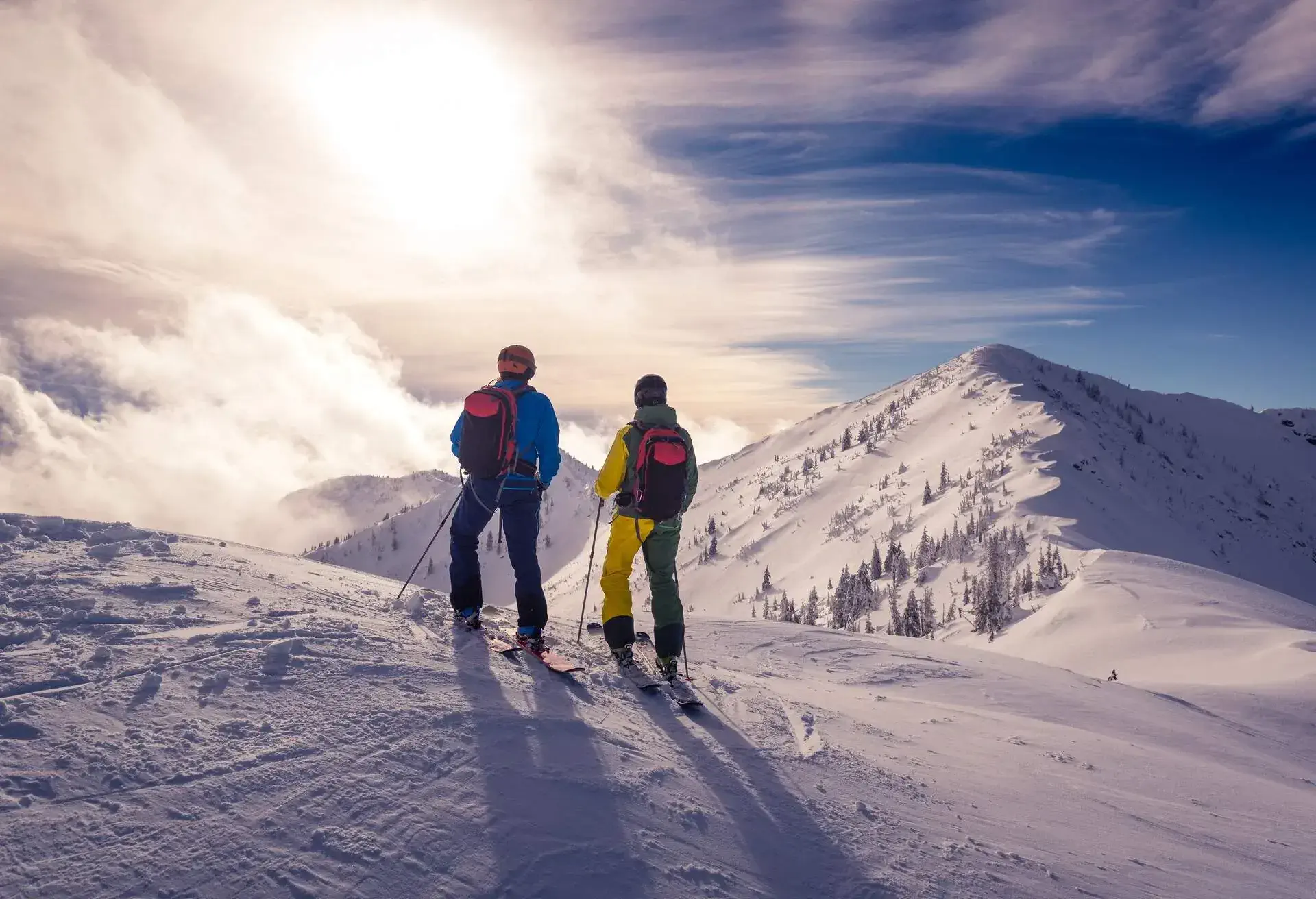
Close to the Banff ski resorts, Panorama offers a large skiing area, well-groomed pistes, and slopes to suit all skill levels. At the resort itself, you’ll find plenty of runs that will suit beginner and intermediate skiers. If you’re looking for more of a challenge, there are backcountry slopes you can hike to and heli-skiing services that can take you away from the crowds. Whether you stick to Panorama or add it to a trip to Banff, you’ll have an amazing time at this ski resort in Canada.
Quick facts: Panorama Mountain Resort
With about 2,975 acres of skiable terrain, Panorama was the top-ranked resort for space per skier in one 2019 report. Its top elevation sits at roughly 2,450 metres and its base elevation is around 1,150 metres. It gets an average snowfall of 5 metres and an average winter temperature of roughly -5°C. The longest run at the resort stretches about 6.5 kilometres.
Why choose a skiing holiday?
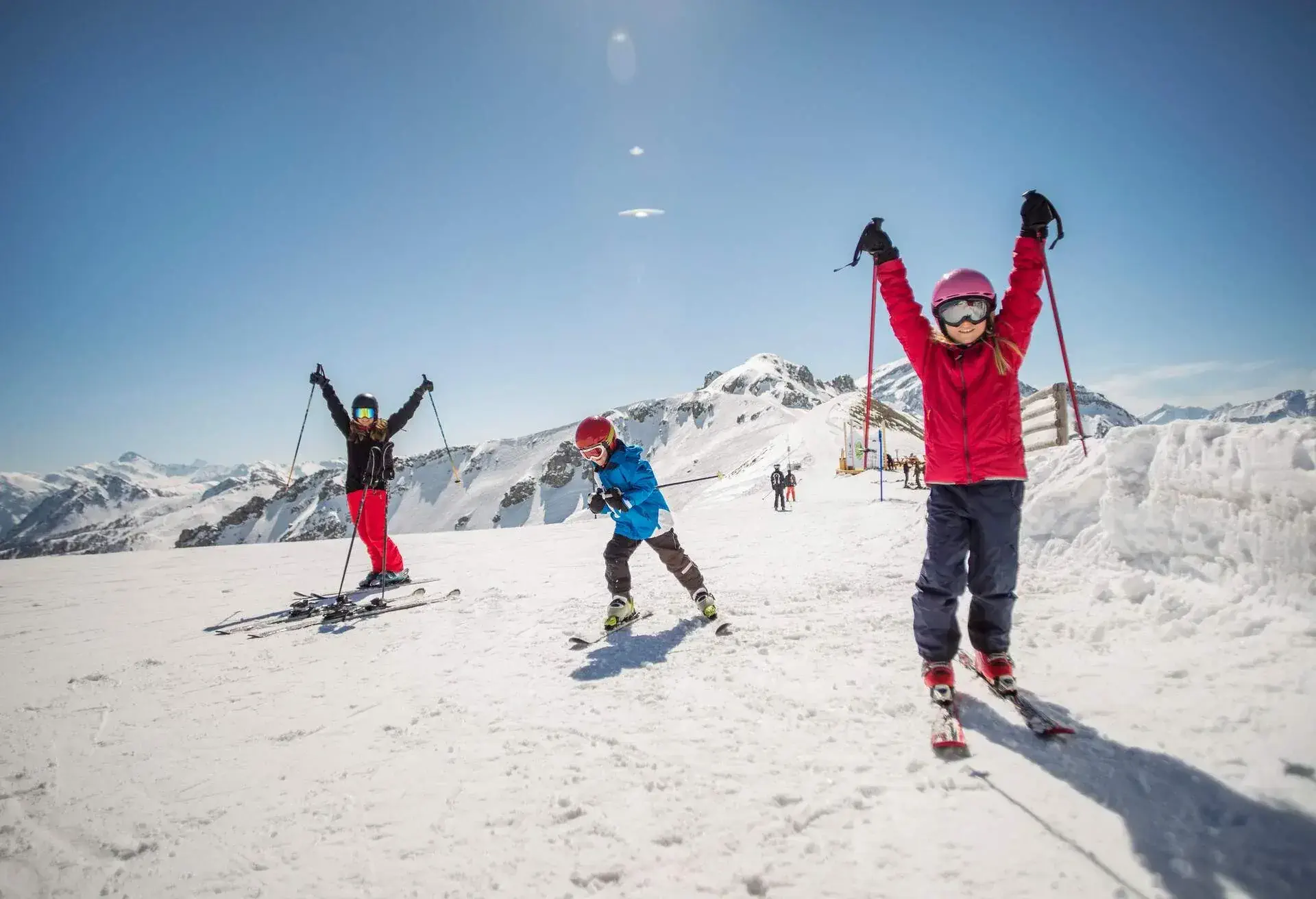
When winter comes around, we often start dreaming of sunny shores and warm weather, but it can be even better to make the most of the season. Snow might be annoying when it’s getting in the way of your commute to work, but it’s a gift when it’s helping you speed down a mountainside. Canada is one of the best places in the world for skiing, but if you’re looking for somewhere a little closer to the UK, Europe has plenty of options. You can check out our recommendations for the best ski resorts in Italy and the best ski resorts in France. If a family-friendly option is crucial, check out our guide to the top 10 European ski resorts for families.

